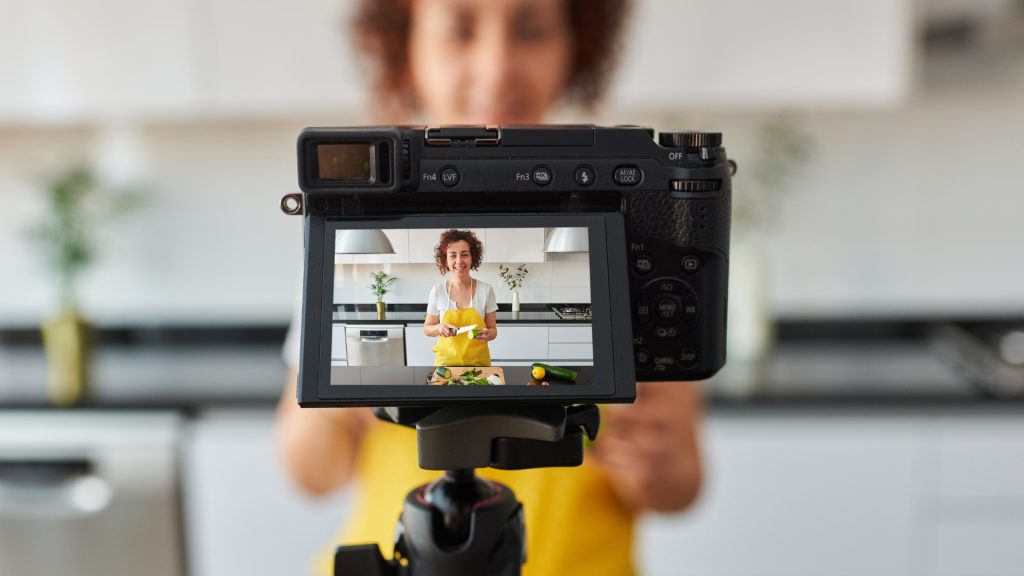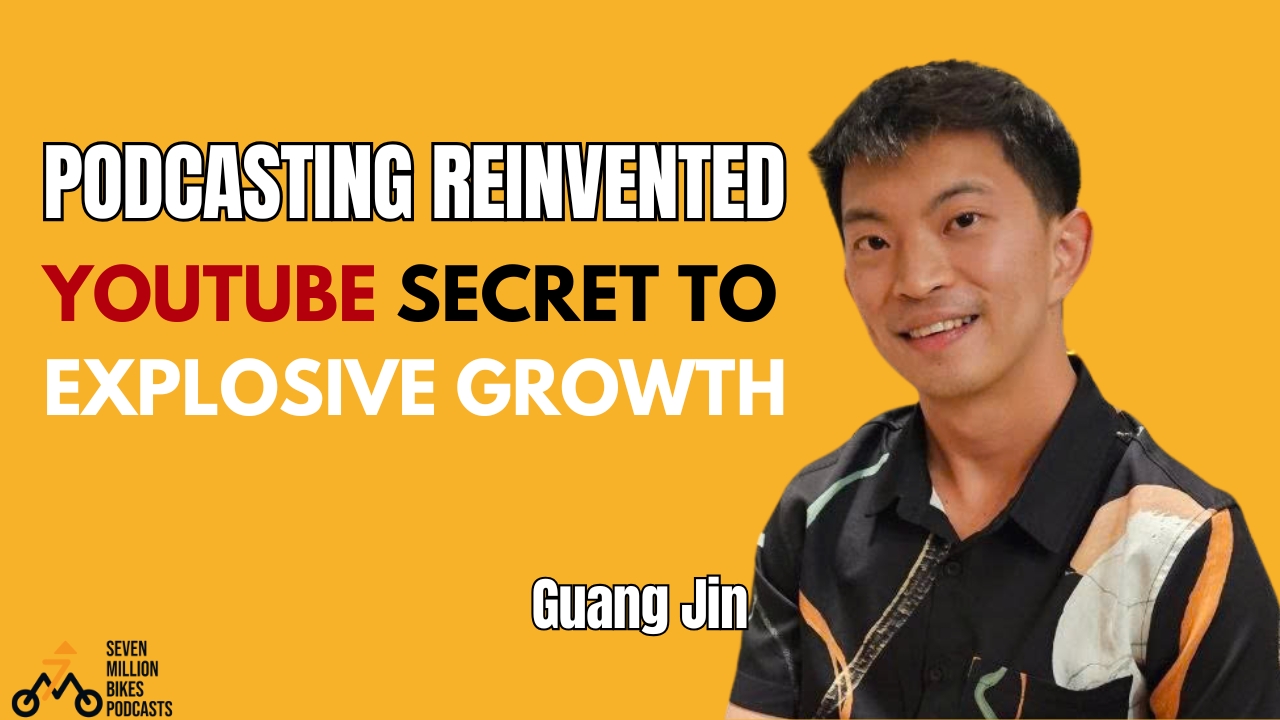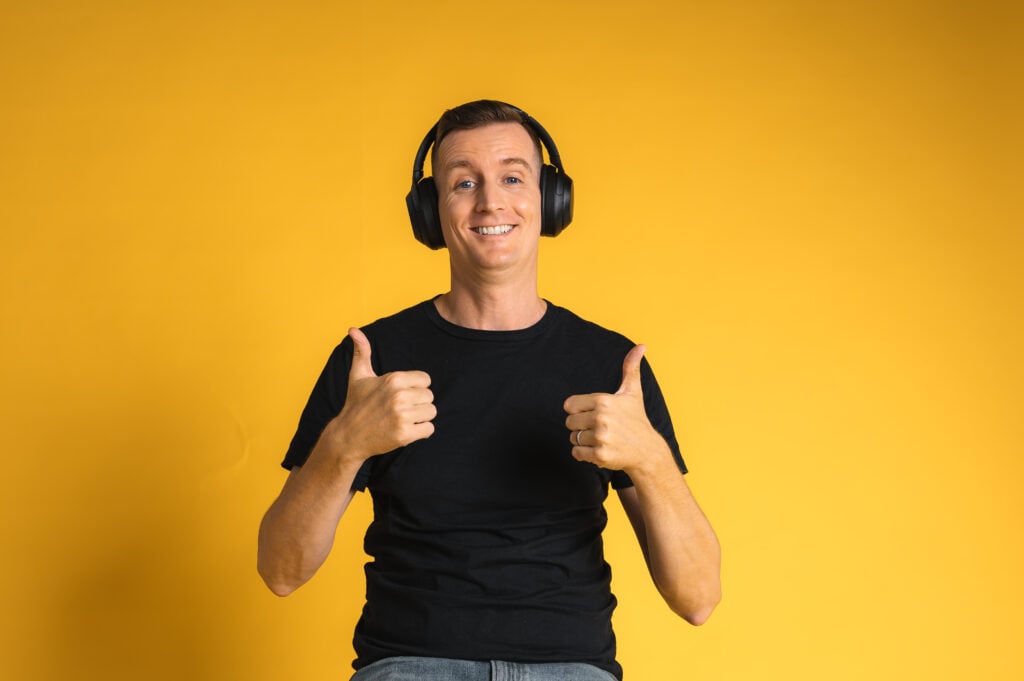Podcasting Reinvented: Guang Jin’s YouTube Secret to Explosive Growth
My name is Niall Mackay, founder of Seven Million Bikes Podcasts. Now, I’m helping people create the best podcast possible through my show, “Smarter Podcasting” to share tips and insights about podcasts.
In my most recent episode of Smarter Podcasting, I had the pleasure of chatting with Guang Jin, founder of 1UP Media. Guang shared his incredible journey of transforming his podcasting approach by embracing YouTube as a growth platform. What stood out most was how his team turned traditional audio content into dynamic videos and saw massive growth as a result.
Podcasting Background and Journey
Guang Jin shared a story that resonated with me. Like me, he had always enjoyed podcasts. He was a long-time listener, and as he consumed more and more content, he began to wonder if he could create something himself. This desire to create was the seed of 1UP Media.
The opportunity to explore this creative urge arose during the COVID-19 pandemic. With more time and the increased flexibility of digital work, Guang Jin decided to give podcasting a try. He started with a guest show focused on careers, aptly named “One Foot In.”
As their skills grew, they considered branching out into different genres. At the time, true crime was exploding in popularity, particularly in the West. Given Singapore’s predominantly English-speaking population, it seemed like a natural fit. They decided to explore this genre.
Today, 1UP Media is producing hundreds of episodes and has become a force in Southeast Asia’s podcasting scene.

The Shift From Audio to Video
One of the most eye-opening parts of our chat was Guang’s success with YouTube. He shared how his team started experimenting with turning their audio content into videos. They didn’t just slap a static image onto an MP3 and call it a day.
Instead, they created visually engaging MP4s with animations and real-life visuals to complement the storytelling. The results were incredible. In just ten months, their true crime channel on YouTube matched the viewership of a podcast they had been running for years. And their subscriber count didn’t just grow—it exploded. In six months, they hit over 10,000 subscribers, and the momentum is still building.
This is a topic I used to resist: the move from audio-only podcasting to incorporating video. Like many “audio dinosaurs,” I clung to the traditional definition of a podcast: an RSS feed distributed through platforms like Apple Podcasts and Spotify. 1 Video, in my mind, belonged on YouTube, making you a vlogger, not a podcaster.
Why Video Matters
I admitted I was hesitant about the video at first. Younger generations, and even many in my own, consume media differently. While audio-only content remains strong, a growing number of people associate anything with a microphone as a podcast, regardless of the platform. They might discover it on TikTok or YouTube, and the technicalities of RSS feeds and traditional podcast apps are irrelevant to them.

I’ve embraced this shift in the past six to seven months. My show, A Vietnam podcast, which I launched in 2019, now has a stronger YouTube presence, utilizing short-form clips and other video strategies. This led me to connect with Guang Jin from 1UP Media. His recent LinkedIn posts caught my attention.
Three weeks prior to our conversation, he shared how using a service that converts MP3s to MP4s with animations and visuals had dramatically boosted their reach on YouTube. Their true crime channel launched just ten months prior, matched the monthly viewership of a podcast they’d been running for two to three years—a 2.5x increase! Even better, this YouTube growth also positively impacted their podcast subscriber count, creating a growth loop between audio and video.
The Secret Sauce: Turning Audio Into Engaging Video
One of the most fascinating parts of my conversation with Guang was hearing about the platform his team developed. They take audio content and transform it into animated videos with visuals that complement the narrative. It’s not just about slapping on a static image or a basic audiogram — something we all know doesn’t work. Guang’s team adds custom animations, real-life imagery, and even hand-touched visuals to ensure the final product is captivating. The result? Viewers stay engaged longer, and the content feels fresh and immersive.
Guang described their process as a mix of technology and human creativity. While the tools they use are advanced, they rely heavily on their team to refine the details.
Guang Jin and his team found that human intervention was crucial. They have people who refine the generated images and videos, and even hand-animate some elements. This hybrid approach allows them to achieve a high-quality result that looks better than “cheap television” but isn’t as minimalist as a simple audiogram. This ensures each video is custom-built for the client. They’re even scaling it up internally for their own podcasts, exploring its potential for genres like romance and business history, in addition to true crime.

The Power of Video and YouTube- High Engagement Rate
He estimated an average of 20-30% based on view completion. However, he emphasized that YouTube provides a much richer dataset for measuring engagement beyond simple completion rates. Metrics like returning viewers, comments, and overall reach provide a more nuanced understanding of audience interaction.
Interaction Metrics
He pointed out that their top video had garnered around 400 comments, with viewers actively debating and sharing personal experiences in the comment section. This level of interaction is a strong indicator of engagement, even if the view completion percentage isn’t exceptionally high. Guang Jin stressed that while he’s an “audio guy” at heart, the sheer volume of engaged people on YouTube is undeniable. They have around 25,000 consistent returning viewers over a 28-day period, a number they find “insane.” While podcast data relies more on surveys and less precise metrics, the concrete numbers from YouTube are compelling.
Audience demographics
Guang Jin shared an interesting observation about their true crime podcast: their audio audience was predominantly female (around 90%), a common trend in the genre, often attributed to women seeking self-protection information. However, the YouTube audience was closer to a 50/50 split.
They discovered that some male listeners of the audio podcast felt uncomfortably close to the perpetrators described, identifying with their traits. The video format, with its visual representation of the perpetrator, created a distance, making the experience less personal. This highlights how audio fosters deeper personal interpretation and immersion, while video offers a more detached perspective.
The larger audience on YouTube can drive traffic back to the audio podcast, creating a powerful growth engine. Despite the potential for slightly lower personal engagement with video, the overall benefits of increased reach and audience growth make it a valuable addition to any podcasting strategy.
Key Strategies – Improve Podcasts Reach And Attract More Listeners
We dug into a question many podcasters ask: How can I make my podcast better and reach more listeners? His answer was refreshingly practical but also thought-provoking
Define Podcast Goal and Strategy
He emphasized the importance of defining your podcast’s strategy. For example:
- If you’re building intellectual property (IP) that can be adapted across various formats. If the goal is IP development, expanding into video is essential.
- If the focus is on building a personal brand within the audio space, sticking with podcasting might be sufficient.
- If you plan to become a production house specializing in audio, in which case a focus on audio is essential.
- If you’re being paid by CPM (cost per mille/thousand impressions) and need to increase impressions, then video is the obvious choice.
How to Make the Transition to Video
Once you’ve decided to incorporate video, the “how” depends on your podcast format. Guang broke it down into two main scenarios:
1. Guest Show Podcasts
For guest shows, the transition to video is relatively straightforward. You’ll need to invest in a good camera setup, but editing video alongside audio can be done efficiently. It’s mostly about enhancing your production quality and ensuring the video is engaging.
2. Narrative Podcasts
The real challenge lies with narrative podcasts, which require more creative solutions. Guang shared how 1UP Media spent over a year testing workflows and experimenting with different video formats to find what worked. It’s not just about adding visuals—it’s about creating a complementary experience that enhances the story.
Guang emphasized the importance of finding the sweet spot: What’s the minimum amount of visual content needed to make your podcast feel legitimate and engaging?
- A simple audiogram won’t cut it—it risks looking cheap.
- Adding a few images might feel like a low-budget production.
- But with thoughtful animations or visuals, your podcast can achieve a balance that feels polished without breaking the bank.
Why Quality Matters
Guang also highlighted that cheap-looking video content won’t succeed. Viewers will quickly dismiss it as “cheap television.” However, he pointed out that narrative podcasts have strengths—great storylines and immersive sound design—that set them apart. Adding quality visuals is the final step to elevate the experience.
At 1UP Media, they’ve found a workflow that works for their clients, combining custom animations and video elements without overextending resources. While the cost is significant, the results speak for themselves. Guang stressed the importance of testing and refining your process to ensure your investment pays off.
One of the biggest challenges my clients face is the editing process. It’s already time-consuming and complex with audio alone, but when you add video into the mix, it can feel overwhelming. Outsourcing your editing isn’t just a solution; it’s the key to focusing on what really matters: creating quality content. Let us take on the heavy lifting. Talk to me to know more about our services.
Conclusion
Guang’s insights into the shift from audio to video highlighted not just the challenges but also the opportunities that come with adapting to the changing landscape.
So, don’t hesitate to try new things and discover your podcast’s full potential.


